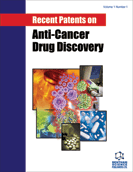
Abstract
Antibody-delivered drugs and toxins are poised to become important classes of cancer therapeutics. These biopharmaceuticals have potential in this field, as they can selectively direct highly potent cytotoxic agents to cancer cells that present tumor-associated surface markers, thereby minimizing systemic toxicity. The activity of some conjugates is of particular interest receiving increasing attention, thanks to very promising clinical trial results in hematologic cancers. Over twenty antibody-drug conjugates and eight immunotoxins in clinical trials as well as some recently approved drugs, support the maturity of this approach. This review focuses on recent advances in the development of these two classes of biopharmaceuticals: conventional toxins and anticancer drugs, together with their mechanisms of action. The processes of conjugation and purification, as reported in the literature and in several patents, are discussed and the most relevant results in clinical trials are listed. Innovative technologies and preliminary results on novel drugs and toxins, as reported in the literature and in recently-published patents (up to February 2013) are lastly examined.
Keywords: Antibody drug conjugate, anticancer agents, auristatins immunotoxin, calicheamicins, cross-linkers, duocarmycins, maytansinoids.
Recent Patents on Anti-Cancer Drug Discovery
Title:Advances in Anticancer Antibody-Drug Conjugates and Immunotoxins
Volume: 9 Issue: 1
Author(s): Franco Dosio, Barbara Stella, Sofia Cerioni, Daniela Gastaldi and Silvia Arpicco
Affiliation:
Keywords: Antibody drug conjugate, anticancer agents, auristatins immunotoxin, calicheamicins, cross-linkers, duocarmycins, maytansinoids.
Abstract: Antibody-delivered drugs and toxins are poised to become important classes of cancer therapeutics. These biopharmaceuticals have potential in this field, as they can selectively direct highly potent cytotoxic agents to cancer cells that present tumor-associated surface markers, thereby minimizing systemic toxicity. The activity of some conjugates is of particular interest receiving increasing attention, thanks to very promising clinical trial results in hematologic cancers. Over twenty antibody-drug conjugates and eight immunotoxins in clinical trials as well as some recently approved drugs, support the maturity of this approach. This review focuses on recent advances in the development of these two classes of biopharmaceuticals: conventional toxins and anticancer drugs, together with their mechanisms of action. The processes of conjugation and purification, as reported in the literature and in several patents, are discussed and the most relevant results in clinical trials are listed. Innovative technologies and preliminary results on novel drugs and toxins, as reported in the literature and in recently-published patents (up to February 2013) are lastly examined.
Export Options
About this article
Cite this article as:
Dosio Franco, Stella Barbara, Cerioni Sofia, Gastaldi Daniela and Arpicco Silvia, Advances in Anticancer Antibody-Drug Conjugates and Immunotoxins, Recent Patents on Anti-Cancer Drug Discovery 2014; 9 (1) . https://dx.doi.org/10.2174/15748928113089990045
| DOI https://dx.doi.org/10.2174/15748928113089990045 |
Print ISSN 1574-8928 |
| Publisher Name Bentham Science Publisher |
Online ISSN 2212-3970 |
 147
147
- Author Guidelines
- Graphical Abstracts
- Fabricating and Stating False Information
- Research Misconduct
- Post Publication Discussions and Corrections
- Publishing Ethics and Rectitude
- Increase Visibility of Your Article
- Archiving Policies
- Peer Review Workflow
- Order Your Article Before Print
- Promote Your Article
- Manuscript Transfer Facility
- Editorial Policies
- Allegations from Whistleblowers
Related Articles
-
Recent Advances in Developing Photosensitizers for Photodynamic Cancer Therapy
Combinatorial Chemistry & High Throughput Screening The Clustered DNA Lesions – Types, Pathways of Repair and Relevance to Human Health
Current Medicinal Chemistry Recent Patents in siRNA Delivery Employing Nanoparticles as Delivery Vectors
Recent Patents on DNA & Gene Sequences Diabetes and Its Complications: Therapies Available, Anticipated and Aspired
Current Diabetes Reviews Linc01638 Promotes Tumorigenesis in HER2+ Breast Cancer
Current Cancer Drug Targets Melittin: A Natural Peptide with Expanded Therapeutic Applications
The Natural Products Journal Dual Roles of Sulforaphane in Cancer Treatment
Anti-Cancer Agents in Medicinal Chemistry Viral Vectors in Cancer Immunotherapy: Which Vector for Which Strategy?
Current Gene Therapy CircRNA 001418 Promoted Cell Growth and Metastasis of Bladder Carcinoma via EphA2 by miR-1297
Current Molecular Pharmacology Oral Precancerous Lesions Show Increased Levels of Glutathione Compared to Cancerous Tissue
Current Nutrition & Food Science Mucoadhesive Vaginal Drug Delivery Systems
Recent Patents on Drug Delivery & Formulation Recent Advances in the Selection of Cancer-Specific Aptamers for the Development of Biosensors
Current Medicinal Chemistry Intravaginal Delivery of Herbal Pharmaceutical Interventions for Uncomplicated UTIs in Women
Current Women`s Health Reviews Management of Gene Variants of Unknown Significance: Analysis Method and Risk Assessment of the VHL Mutation p.P81S (c.241C>T)
Current Genomics The Role of the RhoA/rho-kinase Pathway in Pulmonary Hypertension
Current Drug Discovery Technologies Vitamin D and Infectious Diseases
Endocrine, Metabolic & Immune Disorders - Drug Targets Medicinal Chemistry and Anti-Inflammatory Activity of Nitric Oxide-Releasing NSAI Drugs
Mini-Reviews in Medicinal Chemistry Sera/Organ Lysates of Selected Animals Living in Polluted Environments Exhibit Cytotoxicity against Cancer Cell Lines
Anti-Cancer Agents in Medicinal Chemistry 5-Fluorouracil Derivatives Induce Differentiation Mediated by Tubulin and HLA Class I Modulation
Medicinal Chemistry Development and Applications of Optical Imaging Techniques in Cancer Diagnosis: Diffuse Optical Tomography and Microendoscopy
Current Medical Imaging


























